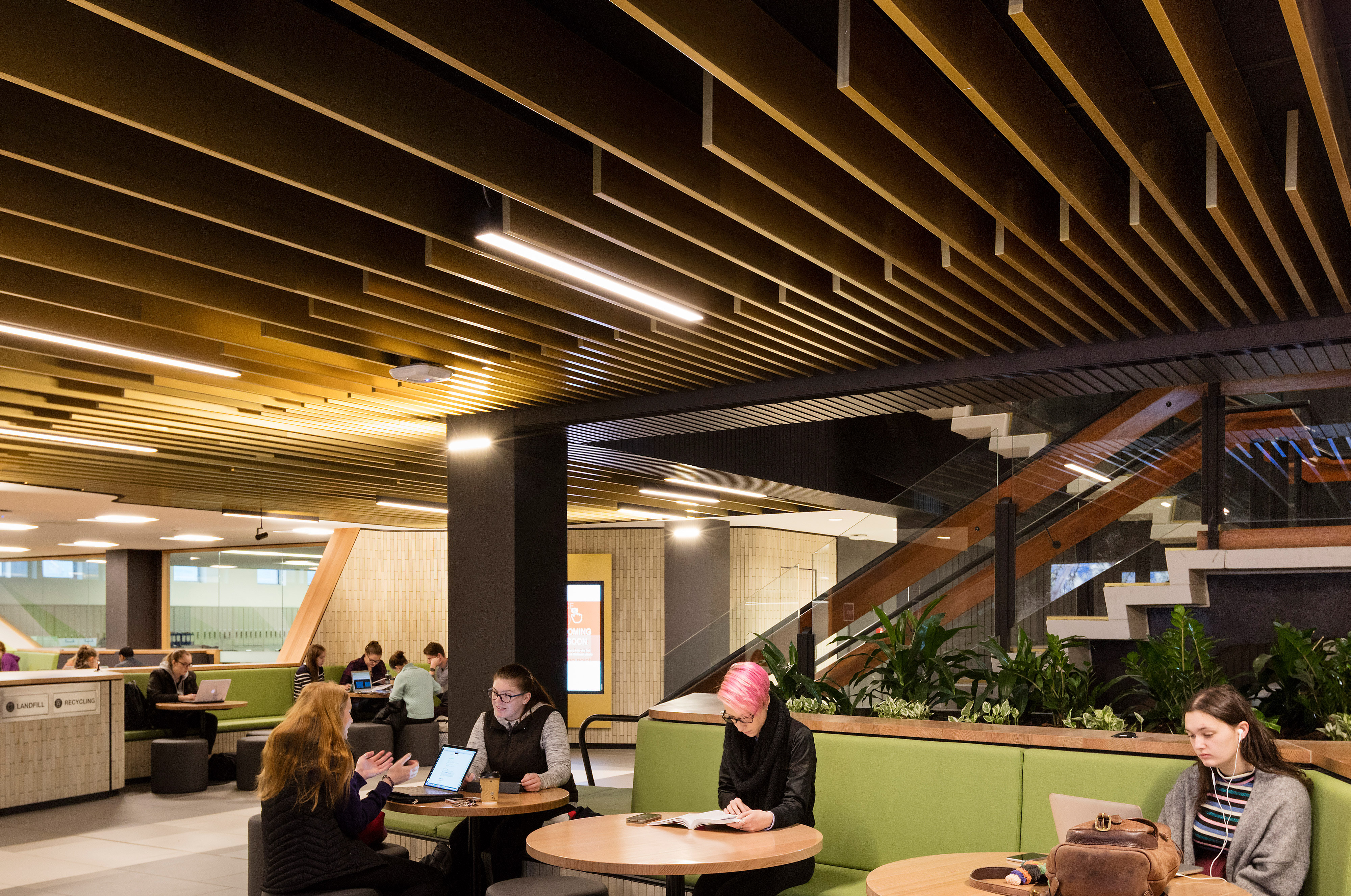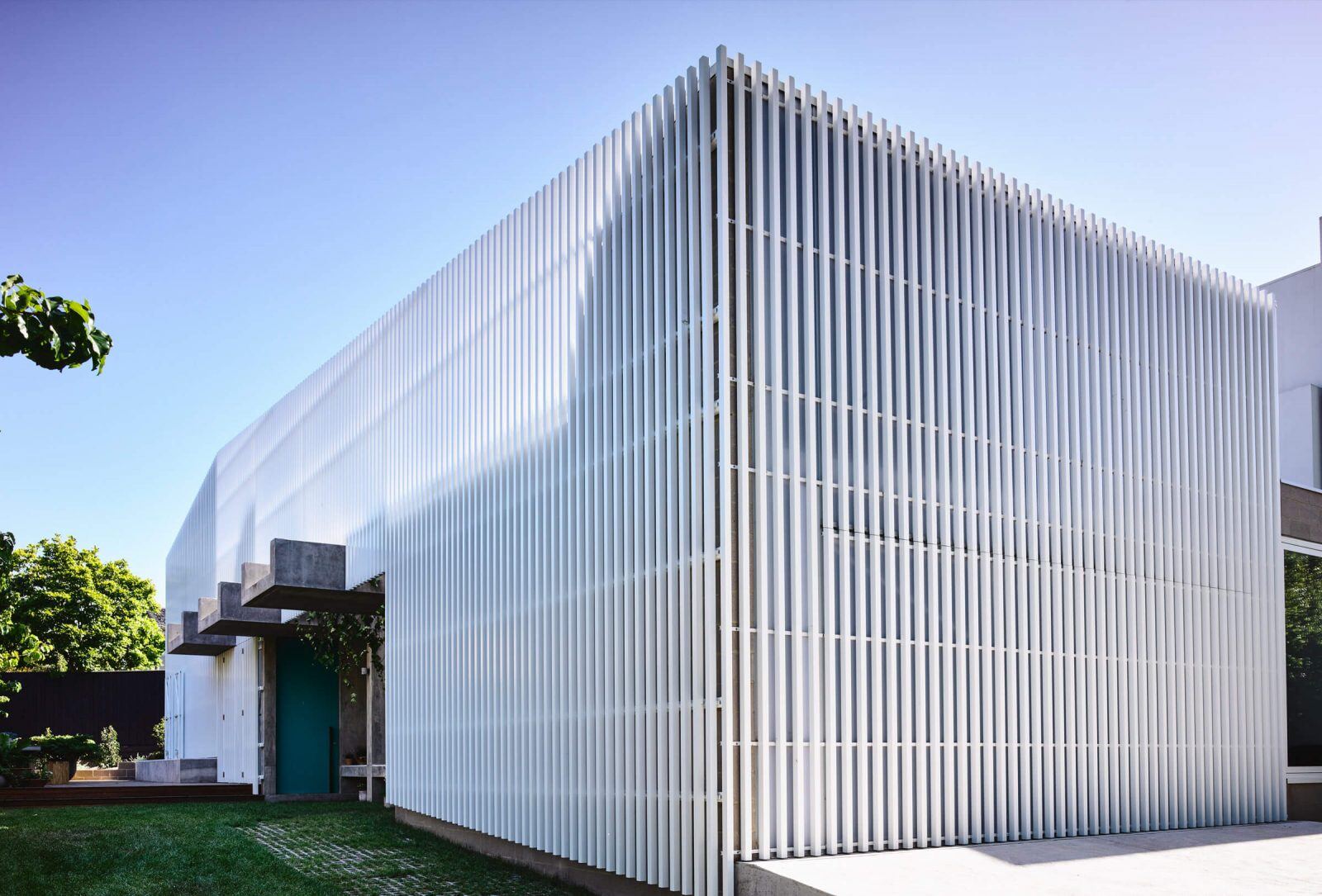25 February 2024

Aluminium is widely used in architectural design due to its lightweight strength, fire resistance, and aesthetic versatility. However, untreated aluminium may not always provide the durability or visual appeal required for high-end applications. This is where surface treatments like anodising and aluminium powder coating come into play.
Whether you’re specifying Click-on Battens or large-format cladding, selecting the right finish is crucial for enhancing longevity, ensuring design consistency, and protecting against environmental factors. But which treatment method is right for your project: anodising or powder coating?
Two primary coating systems dominate architectural aluminium treatments: anodising vs powder coating. Each offers distinct advantages and trade-offs, making them more or less suitable depending on application, durability needs, and budget constraints.
See our full range of aluminium finishes available here.
To learn more about the design flexibility of aluminium, you can view our editorial here.

Sir Louis Matheson Library | Architect - Cox Architecture Melbourne | Photographer - Dianna Snape
Anodising is an electrochemical process that increases the thickness of the natural oxide layer on aluminium. This enhanced oxide layer provides superior corrosion resistance, durability, and colour retention, making it a preferred choice for high-end architectural applications.
Unlike untreated aluminium, which may corrode over time or develop inconsistencies in finish, anodised aluminium maintains its metallic sheen while offering long-lasting protection against wear, UV exposure, and harsh environments.
Anodised aluminium finishes are typically used in areas requiring colour stability, corrosion resistance, and a premium metallic aesthetic, such as:
Note: For high-traffic spaces prone to scratching or wear, a powder-coated finish is generally recommended instead of anodising, as anodised surfaces can be more susceptible to visible scratches.

Moving House | Architect - Architects EAT | Photographer - Derek Swalwell
Powder coating is a decorative and protective finish applied to aluminium via an electrostatic spray process, where coated aluminum powder is electrostatically charged and fused onto the surface in a curing oven. This process results in a uniform, durable surface that resists chipping, fading, and corrosion.
Can you powder coat aluminium? Yes – powder coating provides an excellent finish for architectural applications, offering a vast range of colours and textures to suit any design intent.
This side-by-side comparison highlights key differences in durability, colour options, cost, and maintenance. The choice between anodising and coated aluminum powder finishes depends on project needs, with each offering distinct advantages.
| Factor | Anodising | Powder Coating |
| Durability | High resistance to wear and fading. However, anodised surfaces can be prone to visible scratching in high-contact areas. | Strong, but may chalk over time |
| Colour Options | Limited to metallic hues | Extensive range of colours and textures |
| Maintenance | Low, requires only mild cleaning | May need occasional refinishing |
| UV Resistance | Excellent | Good, but some colours may fade |
| Best For | High-end, exterior applications | Customisable interiors, colour-matching needs |
Proper maintenance ensures your aluminium finish retains its aesthetic and protective qualities for years to come. Understanding the right cleaning methods for each finish will help maintain their integrity and prolong their lifespan.
For more information about anodising, powder coating or our wood finish aluminium, please don’t hesitate to get in touch with one of our team members below.
